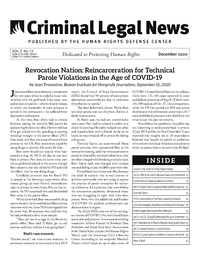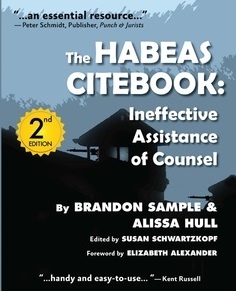by Jean Trounstine, Boston Institute for Nonprofit Journalism, September 15, 2020
Jonathan Best had been out of prison for two years when he ended a rocky relationship with his girlfriend. Like many men and women on parole—a form of early release, in which the remainder of one’s sentence is served in the community—he suffered from depression and anxiety.
At the time, Best often had to choose between paying his monthly $80 parole fee and putting food on the table. He worried that if he got pulled over for speeding, a warning would go straight to his parole officer (PO). Like many who face the stress of reentry from prisons in the US, Best sometimes coped by using drugs or alcohol. He rarely felt free.
Best never found out exactly what happened on Aug 16, 2012, the day he was sent back to prison. Nor does he know what part his ex-girlfriend played in his return, though Best suspects that she called his PO and told the officer that he was doing drugs.
Unofficial protocol was for Best’s PO to appear at his doorstep; supervision often means giving up one’s Fourth Amendment right to privacy in one’s home. But on ...
by Dale Chappell
In my first column in this series on federal habeas corpus for state and federal prisoners, we’ll go over time limits for filing in federal court and how those time limits are calculated. The following information is adapted from my book WinningCites: Section 2255, A Handbook for ...
by Douglas Ankney
Bucking the trend among the majority of federal circuits, the U.S. Court of Appeals for the First Circuit announced that the residual clause of U.S. Sentencing Guidelines (“U.S.S.G.” or “Guidelines”) § 4B1.2(a)(2) – when applied prior to United States v. Booker, 543 U.S. 220 (2005) – ...
An interview with Harvard health researcher Justin Feldman.
by Samantha Michaels, Mother Jones
A day after police officer Derek Chauvin pressed his knee against George Floyd’s neck in Minneapolis, killing him, a county medical examiner began an autopsy. His preliminary findings seemed to conflict with what people had seen in ...
by Douglas Ankney
The Innocence Project of New York, along with the Cincinnati, Ohio, law firm of Gerhardstein & Branch (collectively “Plaintiff’s Counsel”), negotiated a settlement on September 14, 2020, wherein the Cincinnati Police Department (“CPD”) agreed to an unprecedented audit of its DNA-based homicide cases.
The settlement emerged from ...
by Dale Chappell
Within weeks, the U.S. Courts of Appeals for the Fourth and Fifth Circuits opened the doors on two decades-old cases, allowing the possibility for habeas corpus relief based on withheld evidence by prosecutors and law enforcement that likely led to wrongful convictions.
The Fifth Circuit Case
The ...
by Bill Barton
The May 25, 2020, death of George Floyd under the left knee of Derek Chauvin in Minneapolis served as the proverbial “straw that broke the camel’s back” when it came to spurring widespread public outcry over the seemingly endless list of Black Americans killed by police across ...
by Douglas Ankney
The U.S. Court of Appeals for the Eighth Circuit vacated Seneca Harrison’s sentence because the judge for the U.S. District Court for the Western District of Missouri interfered with plea negotiations and made disparaging remarks about the federal judiciary.
The Government offered Harrison a deal where, in ...
by Douglas Ankney
The Supreme Judicial Court of Massachusetts affirmed an order of a trial judge requiring a district attorney to disclose to defense attorneys details of misconduct by two police officers that were disclosed during the immunized testimony of the officers before a grand jury.
In July 2019, Fall ...
by Anthony Accurso
The Supreme Court of Mississippi held that a district court erred when it ordered a mistrial on all three counts of an indictment after the jury had returned an acquittal on two of the counts.
Johnathan Nickson was tried in mid-2018 on two counts of first-degree murder ...
by Douglas Ankney
Division One of the Fourth Appellate District of the California Court of Appeal reversed Rene Quintanilla, Jr.’s murder conviction because the Superior Court allowed as evidence the deceased’s out-of-court statements under the hearsay exception in Evidence Code § 1390.
Quintanilla killed his live-in girlfriend (identified only as ...
Loaded on
Nov. 15, 2020
published in Criminal Legal News
December, 2020, page 24
This issue of CLN is being provided to all Prison Legal News subscribers as a complimentary review copy. For those readers who may not be familiar with CLN, here’s a brief overview.
CLN is a monthly print and online publication focusing on individuals’ legal rights as they pertain ...
by Dale Chappell
More than half of the cases where innocent people were wrongfully prosecuted and imprisoned over the last three decades involved misconduct by the police and/or prosecutors. This comes from a new report by the National Registry of Exonerations (“NRE”) released in September 2020, compiling data on every ...
by Matt Clarke
On July 20, 2020, the U.S. Court of Appeals for the Seventh Circuit held that a prior state drug conviction under a statute that defined the drug more broadly than the equivalent federal statute could be used to enhance a federal drug crime sentence as a career ...
by Douglas Ankney
The Supreme Court of Hawai’i announced that the standard for admission of third-party culpability evidence is the same as the relevancy test that is applies to other types of evidence, superseding State v. Rabellizsa, 903 P.2d 43 (Haw. 1995).
Yoko Kato was arrested on charges ...
Loaded on
Nov. 15, 2020
published in Criminal Legal News
December, 2020, page 27
by Dale Chappell
The U.S. Court of Appeals for the Fifth Circuit held that a mandatory consecutive sentence for a failure to appear (“FTA”) conviction must be calculated as part of the “total punishment,” not merely a stacked sentence, in order to adhere to the U.S. Sentencing Guidelines (“USSG”).
After ...
by Anthony Accurso
The Supreme Court of Colorado, proceeding from original jurisdiction on appeal from a district court, held that the district court erred in denying a preliminary hearing to a defendant charged with a class 4 felony DUI simply because he was free on personal recognizance pending ...
by Anthony Accurso
The U.S. Court of Appeals for the Second Circuit reversed a lower court order denying defendant’s evidence suppression motion on the grounds that a photo, which provided very little identifying information, was insufficient grounds to stop and investigate.
On September 2, 2017, Jaquan Walker and Javone Hopkins ...
by Anthony Accurso
In a decision filed on August 26, 2020, the U.S. Court of Appeals for the Sixth Circuit vacated the U.S. District Court for the Western District of Kentucky’s order denying a prisoner’s motion for sentence reduction under the First Step Act because the court failed to ...
by Anthony Accurso
Geofence warrants have become a common way for law enforcement to link a crime to a suspect using data gathered from smartphones. However, this process is legally dubious, and two federal judges from the district court in Chicago recently rejected issuing such warrants.
Such warrants are sometimes ...
by Anthony Accurso
The Supreme Court of the State of Montana held that a defendant’s rights to be free from unreasonable searches and seizures and invasions of privacy were violated when his landlord’s probation officer searched his rented space.
Stephen Thomas was caring for his sick wife when they ...
by Dale Chappell
The U.S. Court of Appeals for the Fifth Circuit held on August 21, 2020, that it’s not up to the Government to determine whether a defendant qualifies for a reduced sentence under the safety valve provisions of 18 U.S.C. § 3553(f). Instead, the Court reminded, it ...
by Anthony Accurso
In a decision issued August. 13, 2020, the Maine Supreme Judicial Court held that the Sex Offender Registration and Notification Act of 1999 (“SORNA of 1999”) was unconstitutionally applied to a defendant in violation of the Maine and U.S. Constitutions’ ex post facto provisions.
Craig A. Porter ...
by David M. Reutter
The U.S. Court of Appeals for the Seventh Circuit held a district court erred in failing to grant an evidentiary hearing on a claim that counsel rendered ineffective assistance by advising him to reject a favorable plea agreement without having reviewed the case file.
David L. ...
by Douglas Ankney
The Supreme Court of New Hampshire announced that it has adopted the approach of Lafler v. Cooper, 566 U.S. 156 (2016), in reviewing claims of ineffective assistance of counsel where the defendant rejected a plea offer and chose to go to trial based upon advice of ...
by Douglas Ankney
The Supreme Court of Colorado held that Brandon Jackson’s convictions for both murder and attempted murder violate the protections against double jeopardy.
Jackson, along with other members of the gang known as “Sicc Made,” drove to an apartment complex to kill rival gang member “E.O.” One of ...
by Dale Chappell
The U.S. Court of Appeals for the Third Circuit held on September 15, 2020, that when a district court determines that a person is eligible for sentencing relief under the First Step Act, the court must consider all the applicable sentencing factors under 18 U.S.C. § 3553(a), ...
by Douglas Ankney
The Supreme Court of Kansas reversed Michael Alan Keyes’ murder conviction because the district court refused to give his requested self-defense instruction.
Keyes was tried for the murder of Jimmy Martin. State’s witness Carlo Malone testified that Keyes ordered him to stand outside the backdoor of Martin’s ...
by Anthony Accurso
The U.S. Court of Appeals for the Ninth Circuit held that a defendant’s conviction under California Penal Code § 261.5(c) is not a predicate offense triggering a higher mandatory sentencing range under 18 U.S.C. § 2252(b)(1) because the state statute of conviction is not a categorical match ...
by Michael Fortino, Ph.D.
With a global pandemic affecting nearly every aspect of traditional government operations, Syracuse University, in late spring of 2020, set out to evaluate the impact COVID-19 has had on the manpower and operations of our most active law enforcement agencies.
Much of this change ...
by Douglas Ankney
The U.S. Court of Appeals for the Sixth Circuit vacated the U.S. District Court for the Western District of Michigan’s sentence where the sentence imposed was an upward variance from the Guidelines range based on the defendant’s criminal history, but that history had little bearing on ...
by Anthony Accurso
The Supreme Court of Washington issued a ruling that both clarified the standards governing the use of shackles during all court appearances and criticized the adoption of blanket policies for shackling without an individualized inquiry.
John W. Jackson, Sr. was accused of “assault in the second degree, ...
by Dale Chappell
The U.S. Court of Appeals for the Second Circuit held on September 25, 2020, that the outdated compassionate release guideline under U.S. Sentencing Guidelines Manual § 1B1.13, Application Note 1(D) (“Application Note 1(D)”), doesn’t control when a compassionate release motion is filed by a federal prisoner, rather ...
by Matt Clarke
The en banc Supreme Court of Colorado held that the successful completion of a deferred judgment for a sex offense, which resulted in the dismissal of that charge, does not count as a conviction for purposes of the bar to petitioning a court to ...
by Ed Lyon
A settlement with family was reached in the death of Breonna Taylor of Kentucky, an unarmed Black woman who was killed when undercover Louisville Metro police “blindly” fired 10 rounds into her apartment on March 13, 2020, the result of a botched raid that began ...
by Kevin Bliss
The New York Police Department (“NYPD”) has consistently hindered police misconduct allegation investigations, withholding documentation and body-camera footage, as well as advising its police not to cooperate with interviews.
That’s according to an August 2020 article in ProPublica, a nonprofit news organization investigating abuses of power. ...
by Michael Fortino, Ph.D.
Marsy’s Law, also known as the “crime victim bill of rights” designed to protect victims from their attackers when the latter are no longer incarcerated, is used by Florida police as a shield to hide an officer’s identity from public access after a violent encounter ...
by Ed Lyon
Since the Memorial Day killing of George Floyd while in police custody, protests against police brutality and systemic racism have grown. And, as various protests and incidents of excessive force by police make headlines, police chiefs are beating a hasty exodus from troubled departments.
• ...
by Anthony Accurso
A recent article by Nick Mottern on Truthout.org highlights the growing trend of big data collection made possible by tech in policing, specifically the proliferation of drones with cameras.
Julie Weiner was at a Black Lives Matter protest in Yonkers, New York, in early June 2020 ...
by Jayson Hawkins
Police officers have recently been under fire for excessive or even deadly force being used in routine arrests and traffic stops, but some critics have begun to draw attention to a different police behavior that involves how and when officers let people go free.
This criticism ...
by Kevin Bliss
Eddie Lee Howard, Jr. was the thirty-fourth prisoner whose case has been overturned because of the debunked pseudo-science of bite mark forensics. After 30 years in prison, the district attorney now has the choice whether to retry Howard or drop the charges.
Howard, a Black man, was ...
by Kevin Bliss
Lexipol, a privately owned company that drafts policies for over 8,100 police departments, fire, EMS, correctional services, and other public safety agencies nationwide is being criticized by reform activists as doing the bare minimum required by law to keep from being sued. They argue that the company ...
by Jayson Hawkins
An extraordinary wealth of information is easily available if one only utters the magic word – “Google.” The problem arises with the realization that though the Google-genie provides information, there is no guarantee that the information is accurate or fair.
Questions about truth and privacy inevitably ...
by Anthony Accurso
Technology innovation seems to impact every aspect of our lives in the modern era, but what roles should technology play in policing? As the national conversation has turned to police reform, technology’s roles are being questioned anew.
Three technology trends are behind many of our most recent ...
by Casey J. Bastian
In 1966, the official Officer Friendly program was first instituted by the Chicago Police Department. Shortly after inception, the program became sponsored by the Sears-Roebuck Foundation. This educational program was designed for elementary schools, focusing on kids ages 5-8. The Department of Education notes that by ...
by Douglas Ankney
The Supreme Court of North Carolina extended State v. Harbison, 337 S.E.2d 504 (N.C. 1985) (holding per se violation of defendant’s constitutional right to effective counsel when counsel concedes guilt to jury without defendant’s prior consent), to include cases where defense counsel impliedly ...
by Jayson Hawkins
The police-involved killing of George Floyd in late May 2020 has proven to be a rallying cry against systemic racism across America. The sight of a man begging to breathe while a cop knelt on his neck for nearly nine minutes has become the defining ...
Loaded on
Nov. 15, 2020
published in Criminal Legal News
December, 2020, page 50
Canada: A trial was underway in October 2020 for Calgary Constable Alex Dunn, who is accused of assault causing bodily harm during a 2017 arrest. “Dalia Kafi, who is Black and was 26 years old at the time, had been arrested on the accusation she breached a court-ordered ...






